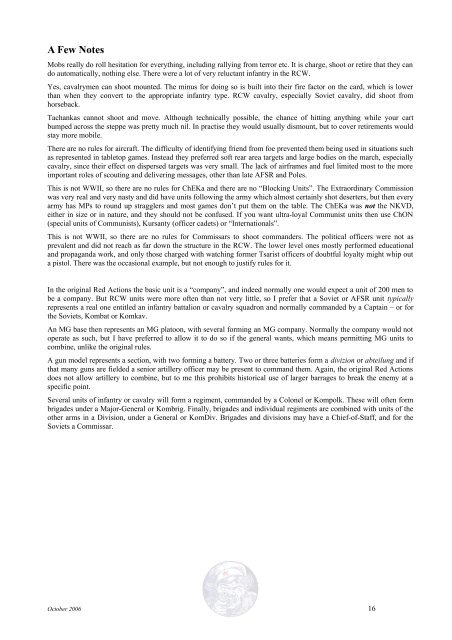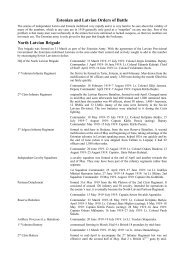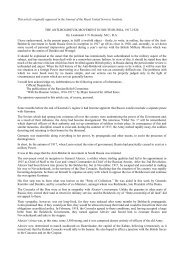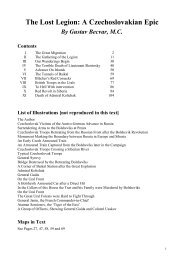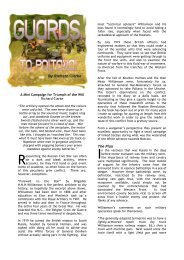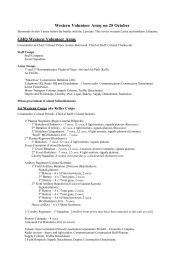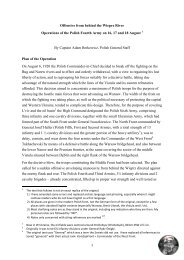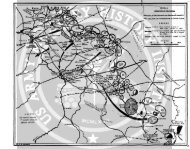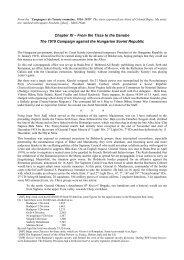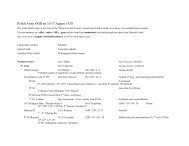You also want an ePaper? Increase the reach of your titles
YUMPU automatically turns print PDFs into web optimized ePapers that Google loves.
A Few Notes<br />
Mobs really do roll hesitation for everything, including rallying from terror etc. It is charge, shoot or retire that they can<br />
do automatically, nothing else. There were a lot of very reluctant infantry in the RCW.<br />
Yes, cavalrymen can shoot mounted. The minus for doing so is built into their fire factor on the card, which is lower<br />
than when they convert to the appropriate infantry type. RCW cavalry, especially Soviet cavalry, did shoot from<br />
horseback.<br />
Tachankas cannot shoot and move. Although technically possible, the chance of hitting anything while your cart<br />
bumped across the steppe was pretty much nil. In practise they would usually dismount, but to cover retirements would<br />
stay more mobile.<br />
There are no rules for aircraft. The difficulty of identifying friend from foe prevented them being used in situations such<br />
as represented in tabletop games. Instead they preferred soft rear area targets and large bodies on the march, especially<br />
cavalry, since their effect on dispersed targets was very small. The lack of airframes and fuel limited most to the more<br />
important roles of scouting and delivering messages, other than late AFSR and Poles.<br />
This is not WWII, so there are no rules for ChEKa and there are no “Blocking Units”. The Extraordinary Commission<br />
was very real and very nasty and did have units following the army which almost certainly shot deserters, but then every<br />
army has MPs to round up stragglers and most games don’t put them on the table. The ChEKa was not the NKVD,<br />
either in size or in nature, and they should not be confused. If you want ultra-loyal Communist units then use ChON<br />
(special units of Communists), Kursanty (officer cadets) or “Internationals”.<br />
This is not WWII, so there are no rules for Commissars to shoot commanders. The political officers were not as<br />
prevalent and did not reach as far down the structure in the RCW. The lower level ones mostly performed educational<br />
and propaganda work, and only those charged with watching former Tsarist officers of doubtful loyalty might whip out<br />
a pistol. There was the occasional example, but not enough to justify rules for it.<br />
In the original Red Actions the basic unit is a “company”, and indeed normally one would expect a unit of 200 men to<br />
be a company. But RCW units were more often than not very little, so I prefer that a Soviet or AFSR unit typically<br />
represents a real one entitled an infantry battalion or cavalry squadron and normally commanded by a Captain – or for<br />
the Soviets, Kombat or Komkav.<br />
An MG base then represents an MG platoon, with several forming an MG company. Normally the company would not<br />
operate as such, but I have preferred to allow it to do so if the general wants, which means permitting MG units to<br />
combine, unlike the original rules.<br />
A gun model represents a section, with two forming a battery. Two or three batteries form a divizion or abteilung and if<br />
that many guns are fielded a senior artillery officer may be present to command them. Again, the original Red Actions<br />
does not allow artillery to combine, but to me this prohibits historical use of larger barrages to break the enemy at a<br />
specific point.<br />
Several units of infantry or cavalry will form a regiment, commanded by a Colonel or Kompolk. These will often form<br />
brigades under a Major-General or Kombrig. Finally, brigades and individual regiments are combined with units of the<br />
other arms in a Division, under a General or KomDiv. Brigades and divisions may have a Chief-of-Staff, and for the<br />
Soviets a Commissar.<br />
October 2006 16


